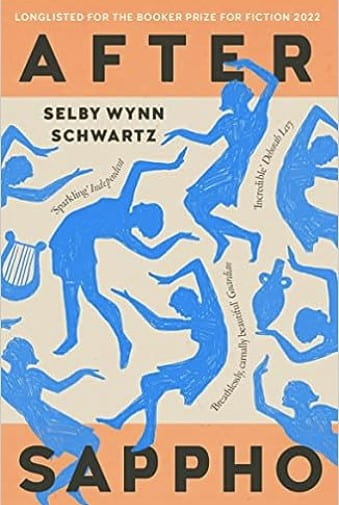This is the fourth and final book that I needed to read for the Future Learn course How to Read a Novel. In this last week we are focusing on setting and After Sappho is the book chosen from the shortlist that most fits with this building block of literature.
I need to say, before I even start, that the writing is sublime. I can’t think of a book that I have read over the last year that has been as beautifully written as this one – the word choice, the weaving of ideas and women and the threads that pull them altogether are gorgeous – and it needs to be because there are other elements that made this book quite hard to read. I am not really even sure if this is a novel. As the books says:
You may have sensed in this novel that the novel does not exist?
p228
Written in short, fragmented pieces it tells of the lives of Sapphists who have wanted more. From Lina Poletti to Virginia Woolf and many women inbetween (too many to list) we listen to a crescendo of voices who are restricted to marriage, running a household and ruled by men but who have broken free and are looking for that island where they can be themselves, have a room of their own and create and love as they wish.
Running throughout the braiding of these stories are the fragments of Sappho’s poetry or lyrics, used to show us the relevance it still has today through the direct influence on the characters in the novel. As we move from the late 1800s to the early 1900s we encounter war and this inverts everything. Women can work, drive a bus or ambulance, nurse soldiers even become spies and so now they are Sappho with Woolf being the ‘modern Sappho’.
Things I loved about this book are many. I loved the fact that men were written out of the story just as women have been throughout history. This is a great book to read after Trust be Hernan Diaz for that reason. I loved the way that Greek grammar is woven in to describe the moods and spirals round and round through the book right up until the end.
The genitive is a case of relations between nouns. Often the genitive is defined as possession, as if the only way one noun could be with another were to own it, greedily. But in fact there is also the genitive of remembering, where one noun is always thinking of another, refusing to forget her.
p16
There were the optative moods the characters felt and the aithussomenon that forewarned with the trembling of leaves – ‘the weather of afterwords’.
I loved the use of colour to describe. When Natalie met Eva Palmer ‘whose long red hair was like a poem’, they ended up living in a vermilion cloud. Or Romaine Brooks who dressed in black, furnished and decorated her house in black and paints faces with shadows ‘like a black cap’.
If grey encompassed many feelings, then black was where they were buried.
p125
I also loved the way settings dissolved into characters or feelings with the continuation of vocabulary.
Leslie Stephen’s study was at the top of the house, over all of the rooms of women and children. One floor down in the night nursery, a fire burnt through long winter evenings; Virginia watched the nervous, flighty shadows flung on the walls. As the firelight came in flickers and glimpses, her thoughts flared and fell into a charred confusion. Voices were coming and going like shadows, muttering at her, leering, crackling, casting themselves at the windows. She could hear them mouthing burnt words at her.
p51
Or, how about
After the war we were left with ash in our eyes, in our mouths. We set about clearing the rubble and dust from our vision; we were free to buy butter and petrol, we could walk the streets without fear.
p171
There were two things that challenged me. The first was the fragmentary style the book is written in. For some reason, the chunks of writing made me read faster and faster, gathering speed until I didn’t really know what I was reading. I had to force myself to slow down and linger, to catch the ideas and words and how they trailed after each other.
The second challenge is that this is a book written about middle-class, white women who had the luxury of travel, building their own homes and finding the life they wanted when it went against society. The book is written in the first person, plural with the pronoun ‘we’, a Greek chorus if you like, but the we, rather than being inclusive, excludes those who are not European or American or those of colour. Josephine Baker does warrant a line or two but not enough to really count. I haven’t read anywhere about the author’s choice of women but it would be interesting to know why she chose who she did. It might also mean that there is a gap here for someone else to round out the ‘we’.
This is a book about the right to an identity that you choose, creativity and education. Schwartz has bound us to a winding road from the past to the present, paving the way for those who identify as creatives or artists. Towards the end Woolf describes what a biography is.
A genre telling people as if they were stories also tells people how to read them. It is a book that slyly goes both ways. A biography attending to the subject herself is also, with a slight bow, turning to face her readers, like a quadrille in a dance.
p240
Whilst you might not call this book a biography, it dances with the subject and the reader. Remarkable for a debut.
